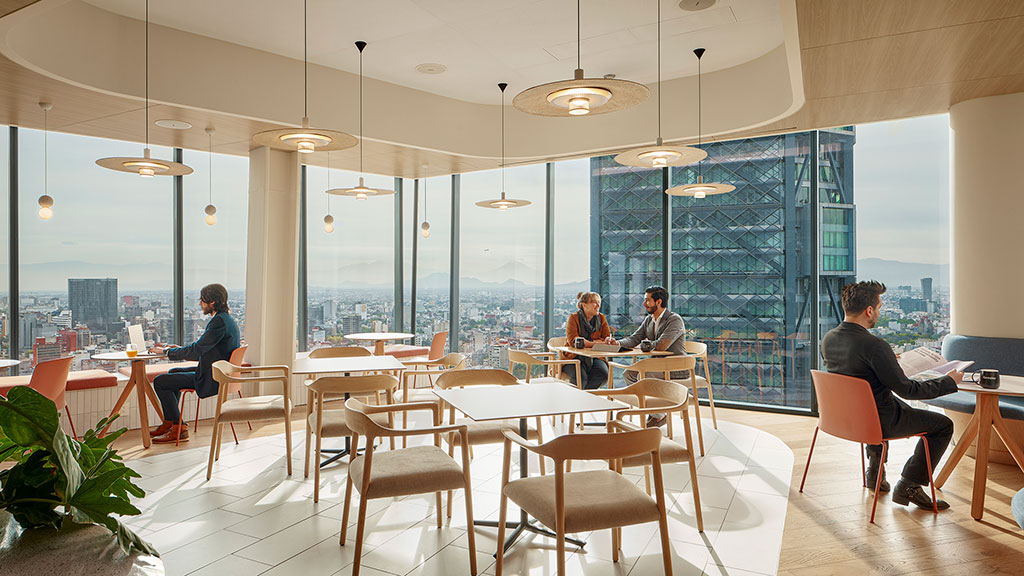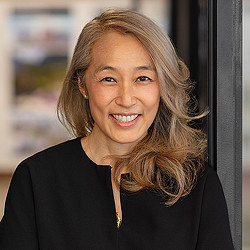Mexico City Is Reckoning With Explosive Economic Growth Alongside a Mounting Water Crisis
May 22, 2024 | By Sofia Song, Stella Donovan, and Jacqueline Scherr
Gensler’s latest cities research, “The Return of the City: A 2024 Retrospective of the City Pulse,” presents a closer look at six different cities around the world: Austin, London, Mexico City, New York, San Francisco, and Singapore. We pulled these cities from the headlines to learn deeper lessons about how they navigated the public health crisis and understand what the future may hold. This blog explores Mexico City.
Mexico City exploded in popularity during the pandemic. The city’s population grew by some 600,000 people (up from 1% annually to about 3%) between 2019 and 2023, according to The World Population Review. But this was not organic growth — a seismic shift took place. As multitudes of locals returned to their home provinces to escape the virus, a wave of foreigners took their place, gentrifying neighborhoods and driving up housing costs. But, as world economies rebounded, Mexico City reaped the benefits of huge foreign investments by companies seeking to relocate their operations or link with partners closer to the U.S.
Despite this influx of capital and accelerated economic growth, a water shortage reached a crisis level. The threat emerged through many factors — from geography to infrastructure — that were compounded by climate change.
“Even as we navigate the water crisis, Mexico City is a resilient city that continues to reinvent itself,” said Carlos Pérez-Gavilán, co-managing director of Gensler Mexico City. “The innovation and entrepreneurial spirit here are comparable to few cities in the world.”
Mexico City ranks very high on living experience, with some of the largest gains in our study.
Known for its good food and rich culture, Mexico City rated high in our study. A majority (70%) of people were satisfied with their current living situation, which is one of the highest ratings in this study. Experience numbers are high as well, with 79% of respondents feeling their city offers a great experience (compared to 72% in 2021). The percentage increases for living situation and city experience are some of the largest in the study. Fewer people believe that their city is too noisy (77% in 2021 vs. 66% in 2023) or losing its cultural heritage (44% in 2021 vs. 33% in 2023), and more feel that their city has clean air (15% in 2021 vs. 25% in 2023).
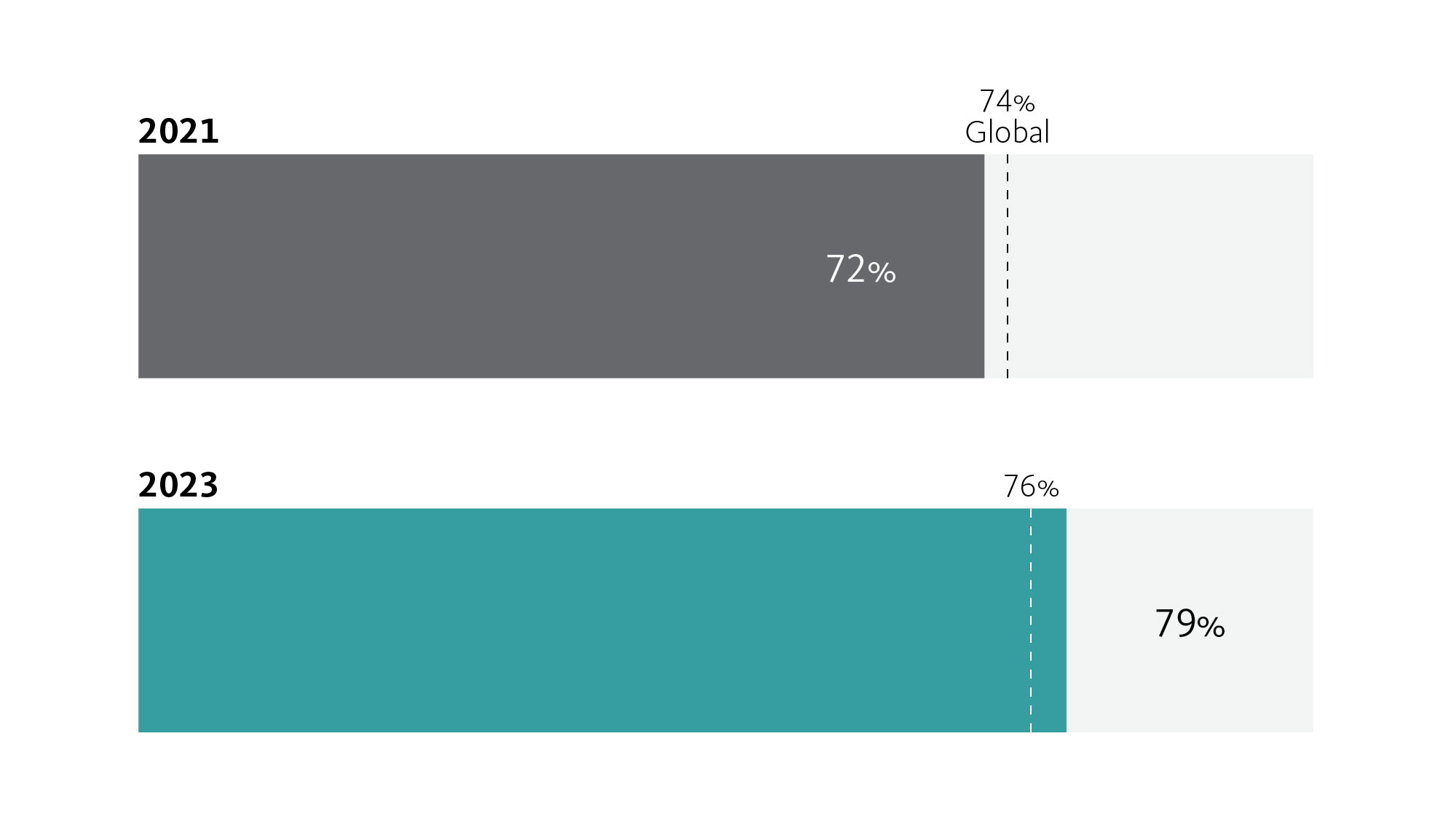
Perceptions of career advancement are on the uptick, and the majority are satisfied with the city as a place to work.
For workers in Mexico City, career advancement and employment are on the rise. Half of respondents feel that their career advancement has gotten better, compared to only 34% in 2021. When it comes to employment opportunities, 37% believe their work opportunities have gotten better — an improvement of 25% from 2021. Remote work is having less of an influence on move intentions compared to two years ago, with roughly one-third of residents thinking about moving out of the city or to a different part of the city (roughly an 8% decrease for both answers since 2021). And 70% of Mexico City residents say they are satisfied with their city as a place to work.
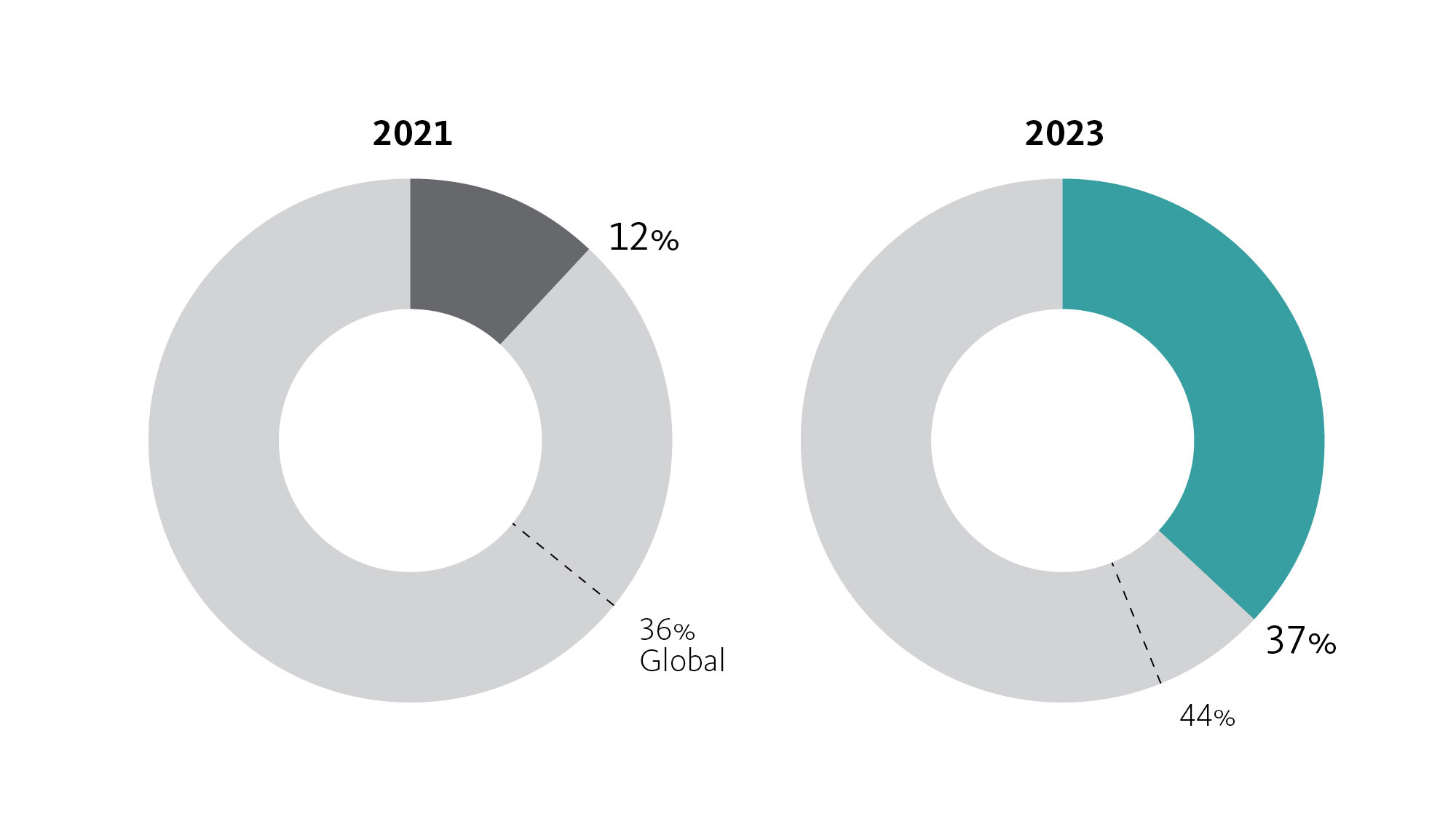
Mexico City is performing better on affordability than the global average.
Overall, 42% of Mexico City respondents say that living in their neighborhood is not as affordable as it was a year ago (up from 37% in 2021). This number is 21% lower than the global average. Additionally, 40% of Mexico City respondents say that they live paycheck to paycheck (a 3% increase from 2021).
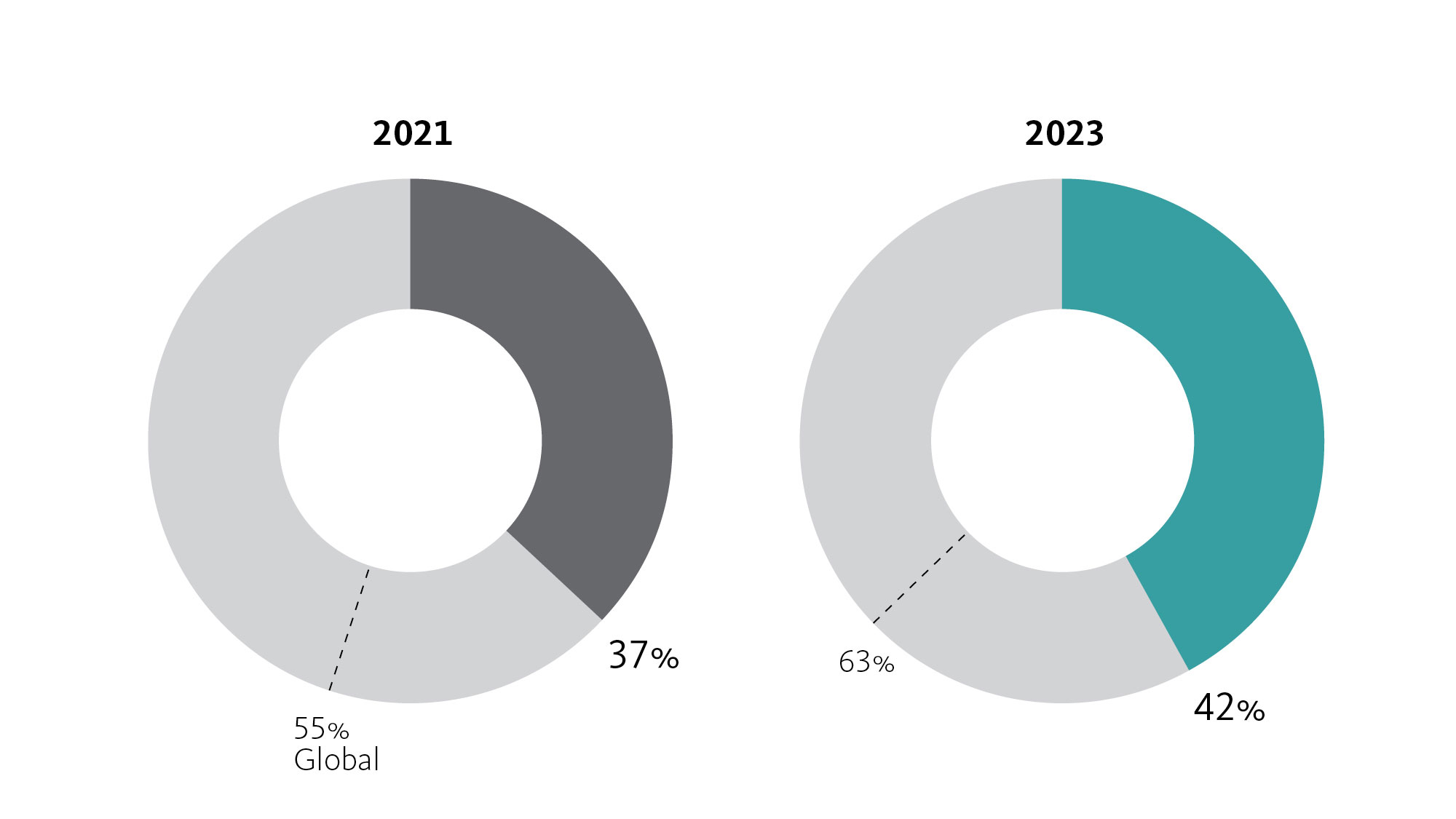
More than 8 out of 10 Mexico City residents think their CBDs provide a great experience.
Overall, 85% of respondents think Mexico City’s CBDs (Paseo de la Reforma, City of Santa Fe, and Insurgentes) provide a great experience — down 2% over two years. In terms of physical improvements, people are most eager to see less traffic congestion (45%), more green space (44%), and improved public transit and micromobility options (37%).
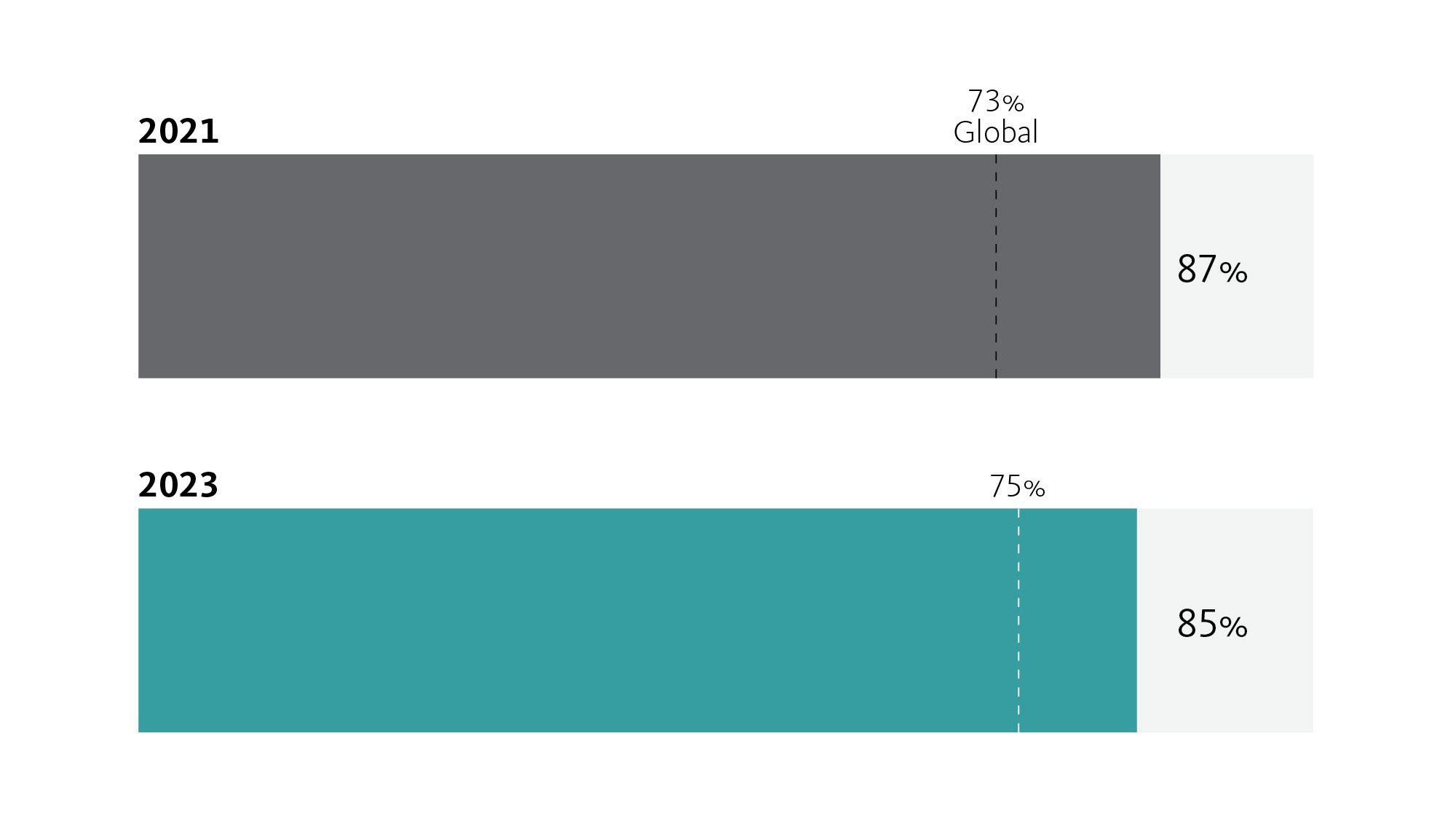
Mexico City remains a city of opportunity.
Robust population growth, coupled with an influx of foreigners, heightened the cost-of-living crisis in Mexico City. As it became one of the world’s top destinations for long-term renters, more and more Mexicans were displaced as many neighborhoods gentrified. The shortage of housing was underscored by an MIT study concluding that Mexico needs to build 800,000 housing units a year for two decades to keep up with demand.
As for the water crisis, Conagua, the national water commission, is undertaking a three-year project to install, develop, and improve water infrastructure to help the city cope. While office space occupancy inched back up, remote work caught on. The work from home trend was so pronounced that buildings in some office corridors were being converted into apartments, hospitals, and stores. Even so, more than 75% of employees have returned to the office, according to CBRE.
“Our city is full of opportunities — a gigantic market that is open and eager for new ideas and welcoming to new people,” Pérez-Gavilán said.
For media inquiries, email .
